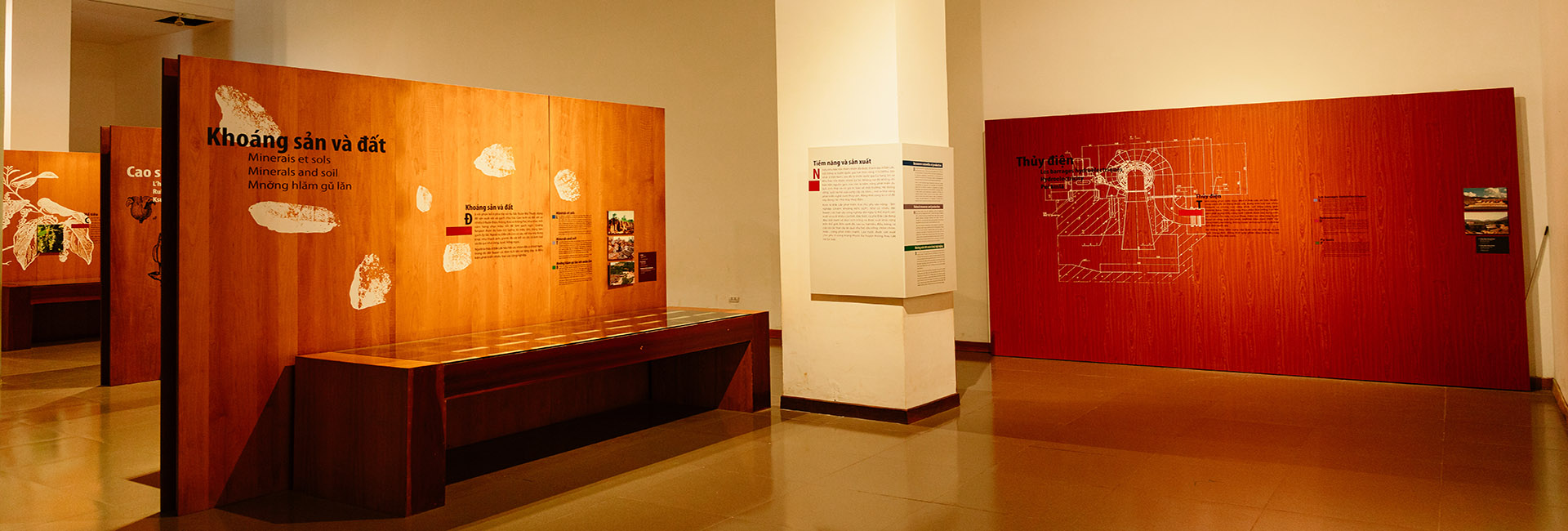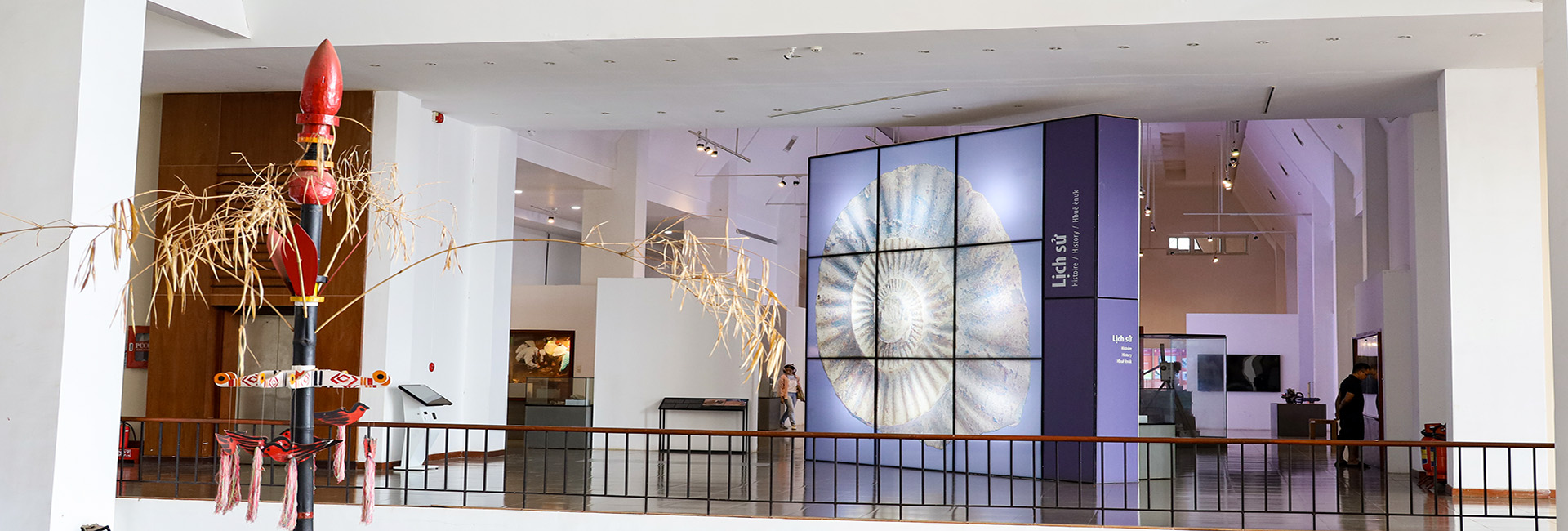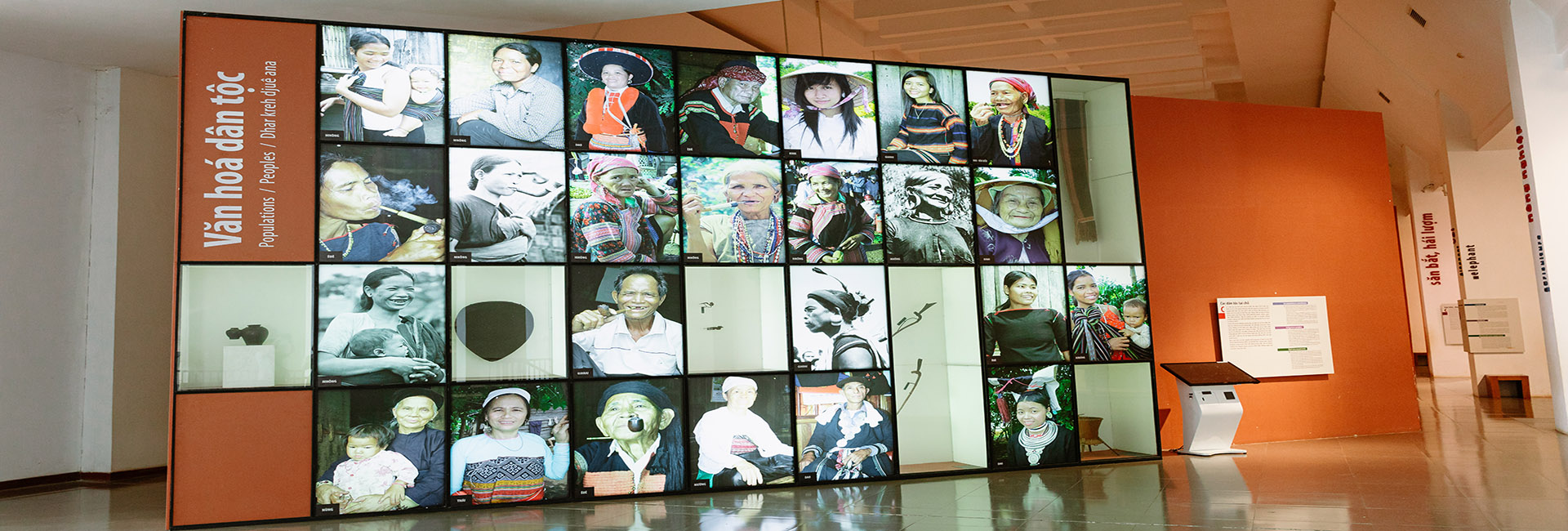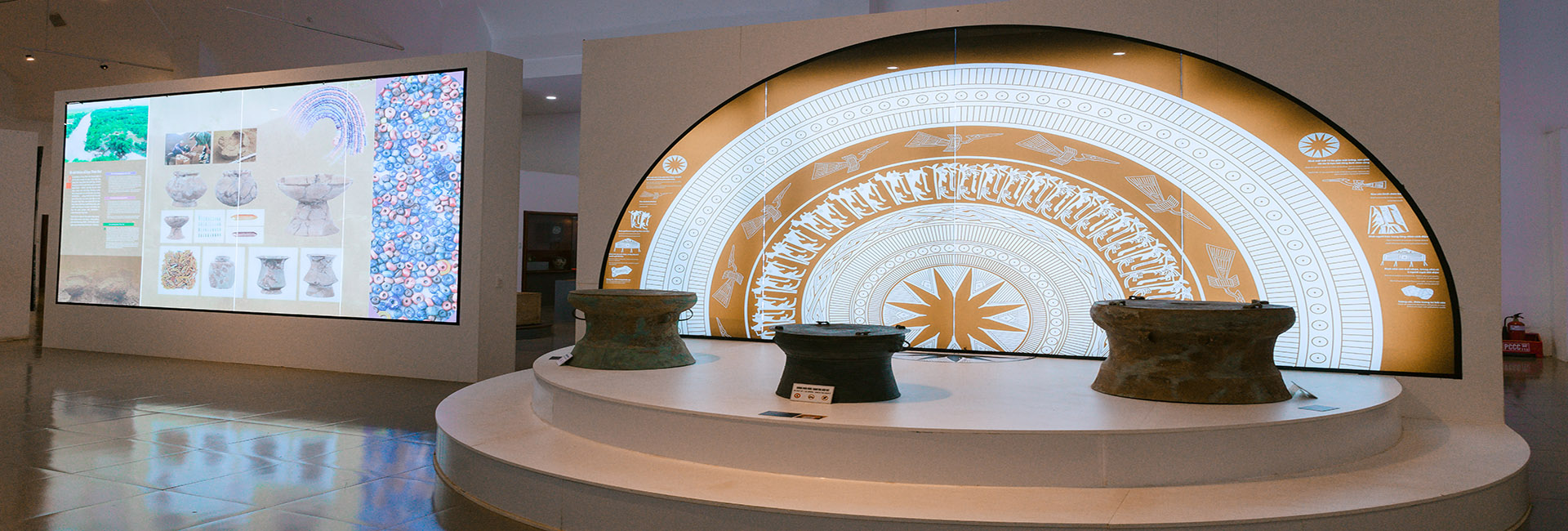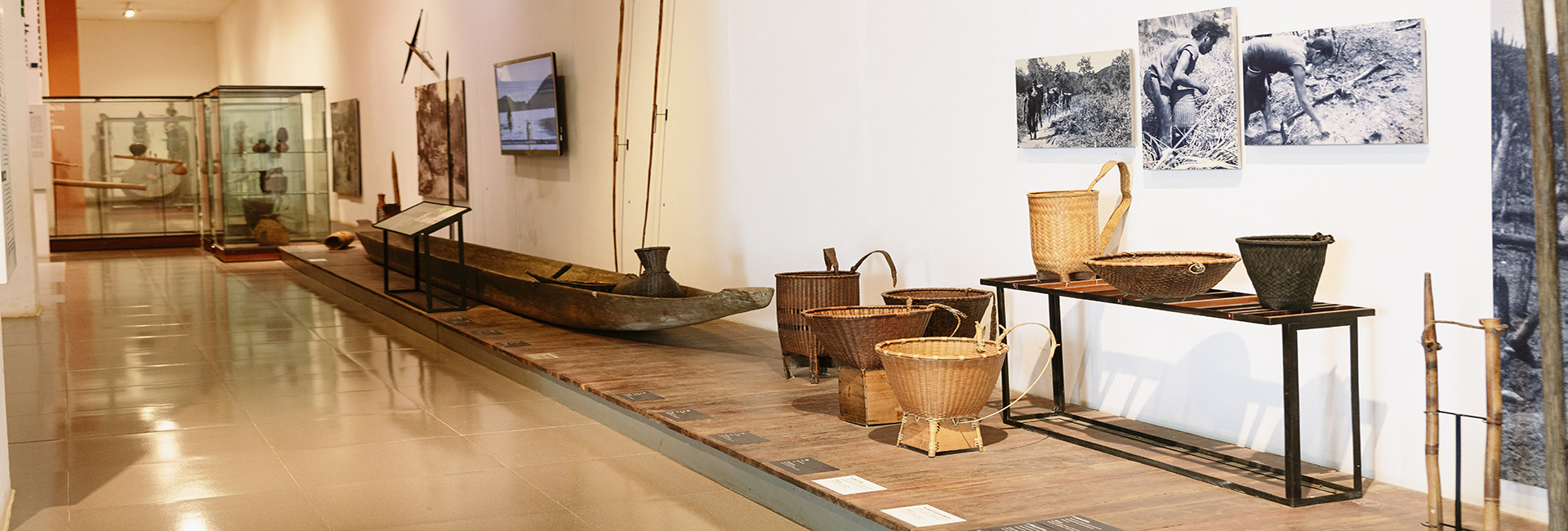EPICS – THE EDE’S INVALUABLE CULTURE
The Ede are well-known for their epics named Dam San, Xinh Nha..., which are long rhyme stories, even described or illustrated with movements and actions. The Ede epic is a true product of the slash-and-burn civilization.
Dak Lak Museum is preserving a large number of epics, notably the epics Dam San, Dam Di, Khĭng Yŭ, Mdrǒng Dam, Dam Tiong, Hbia Mlĭn, Dam Tiong, Dam Bang Mlan, Dam Trao - Dam Rao,...

The Ede epics preserved in the library of Dak Lak Museum
The Ede epics deriving from folk, existing in oral or written form. The content mainly praises and honors those who have contributed to the village community; promote creativity, ingenuity, praise the spirit of solidarity and mutual support in difficulty, promote justice, and protest against immorality and customary illegality; Promote beauty in both physical strength and soul strength. The epics also praise love between couples, family affection, and desire to conquer nature. In addition, the epics also describe the simple daily life and labor in the village. They express people's legitimate aspirations and dreams for a better world between people, the natural world and the gods...
Some Ede’s epics were printed into literary books used for teaching in some universities. The Ede call the epic klei khan. Klei means lyrics, song; Khan means narrative singing, which is a type of folk cultural activity existed for a long time in the Ede community. It is a form of general storytelling through narrative singing, passed down orally from generation to generation.
The Ede artists of epic narrative singing are called Po Khan Po means teacher, master, expert; Khan means ancient tales. They are highly respected because according to folklore beliefs, they are individuals bestowed by the Spirit with unique abilities, considered as the "living treasures" of the nation, as the comprehensive artists, the creators of works, the directors of situations, the talented actors who can perform female, male, demon or fairy, etc. They also serve as commentators on characters or story developments. They are the ones who have created many versions of the Ede epics, sothe Ede epics have developed into a anonymous treasure true to the essence of rich and diversified folk creativity.

The artists, Y Dhin Nie and Y Wang Hwing (Buon Triă, Ea Tul commune, Čư M’gar district), performing at the opening ceremony of the class of the Ede’s epic narrative singing - klei khan, 2017.
To perform epic storytelling, in addition to innate talent, the artists are traditionally followed from generation to generation within families where grandparents or parents are skilled in epic narration. Furthermore, they, consciously learn by themselve from other talented epic artists in their community or region. The Ede’s language of epic narrarion is a seamless combination of words and music. In terms of words, the Ede epics exhibit a unique form of language known as "rhyme" (klei duê). During performances, the epic artists also apply traditionally folk melodies of their ethnic group, such as Ayray, kưưt and mmuin..., to create a poetic and musical rhythm. The epics are typically performed in front of audiences at various locations: inside huts, on fields, at tomb abandonment and in the living room of a longhouse. An epic is a long story that the narrator sings and tells connecting events flexibly, creatively, and vividly, creating unity in content and captivating the listeners. Therefore, an epic can be performed for many days and nights before reaching its conclusion.
Until now, the epic performance space was no longer the same as before. The long houses have been gradually replaced by solid concrete houses; the watch-towers in the field no longer exist because farming methods have changed: shifting from rice field to growing coffee, rubber, pepper... Rituals and festivals such as tomb abandonment ceremony, wedding ceremony, Kpan procession, new house ritual are held simply or even not done at all, so they lose their sacredness and festivity. Besides, there are not many Khan narrattors and many talented narrators are no longer healthy enough to teach the younger generation. Furthermore, listeners do not have the same needs as before, so the epic narration in cultural events in the village no longer exist. Today, young generation is not very interested in their nation's traditional culture but only likes to listen to youth music on other modern media such as the internet, movies, photos, etc. The Ede epic is fading away and is at risk of disappearing from the Central Highlands villagers’ life. Artisans who are still passionate about epics believe that to preserve this precious intangible cultural heritage, Dak Lak province needs to organize and replicate classes to teach epic narrative singing to the younger generation; create the environment for artisans to demonstrate their epic performance abilities.


Dak Lak Museum receiving a documentary film about Teaching the Ede Epic in Dak Lak, awarded by the delegation of the School of Social Sciences and Humanities, Hanoi National University and the Institute of Cultural Research.
Currently, to preserve and promote the Ede’s epic value, Dak Lak Department of Culture, Sports and Tourism has coordinated with the Vietnam Folklore Research Institute, the Institute of Culture and Arts... to implement the project of investigation, collection, preservation,interpretation and publishcation of the Central Highlands epic treasures; restore festivals and performance spaces to create the environment for epic narrative singing to develop. When epic narrative singing resounds every day in the Ede’s longhouses, it will gradually get into minds of the young Ede, creating a new class of listeners and epic narrators so that the epic will last forever in the Ede community.
Hoai My




